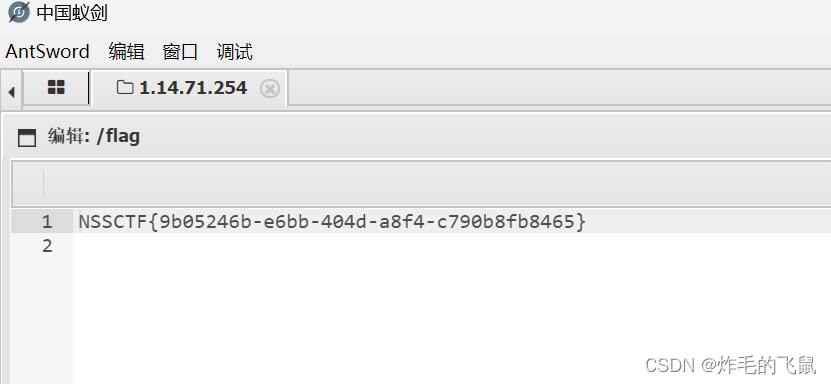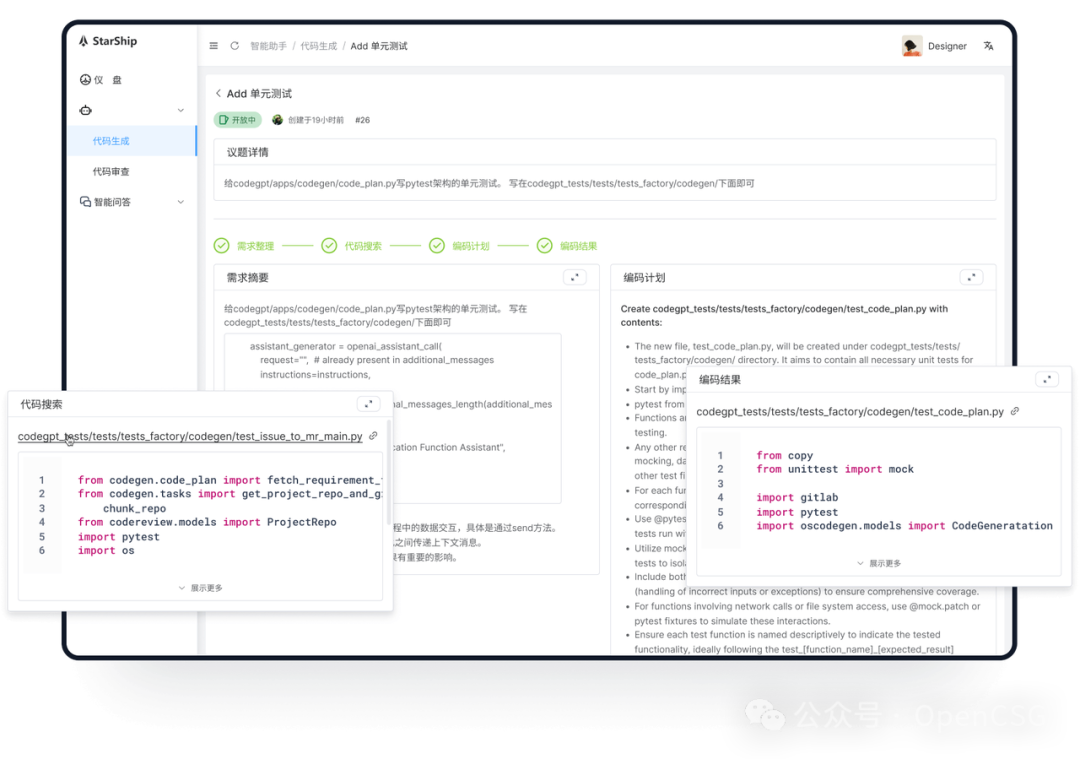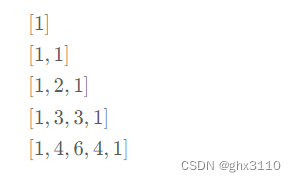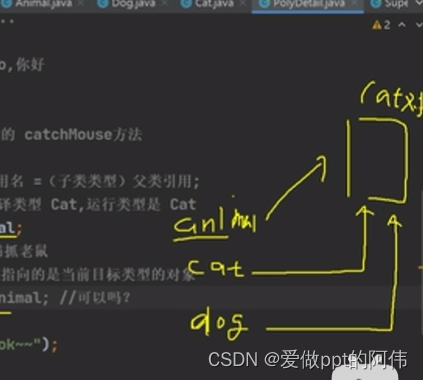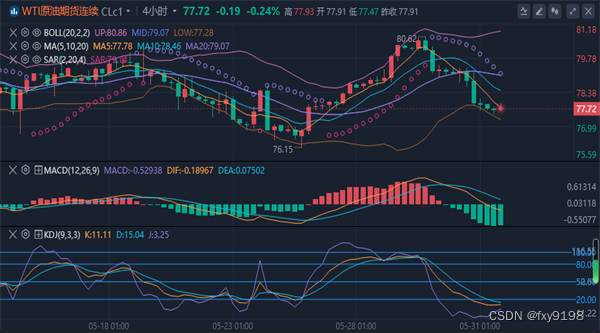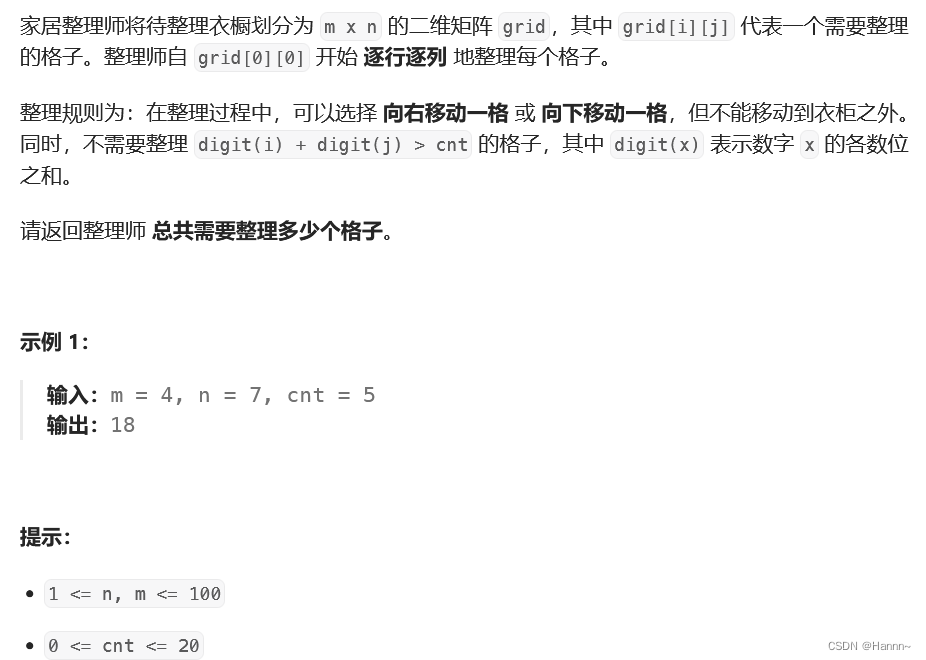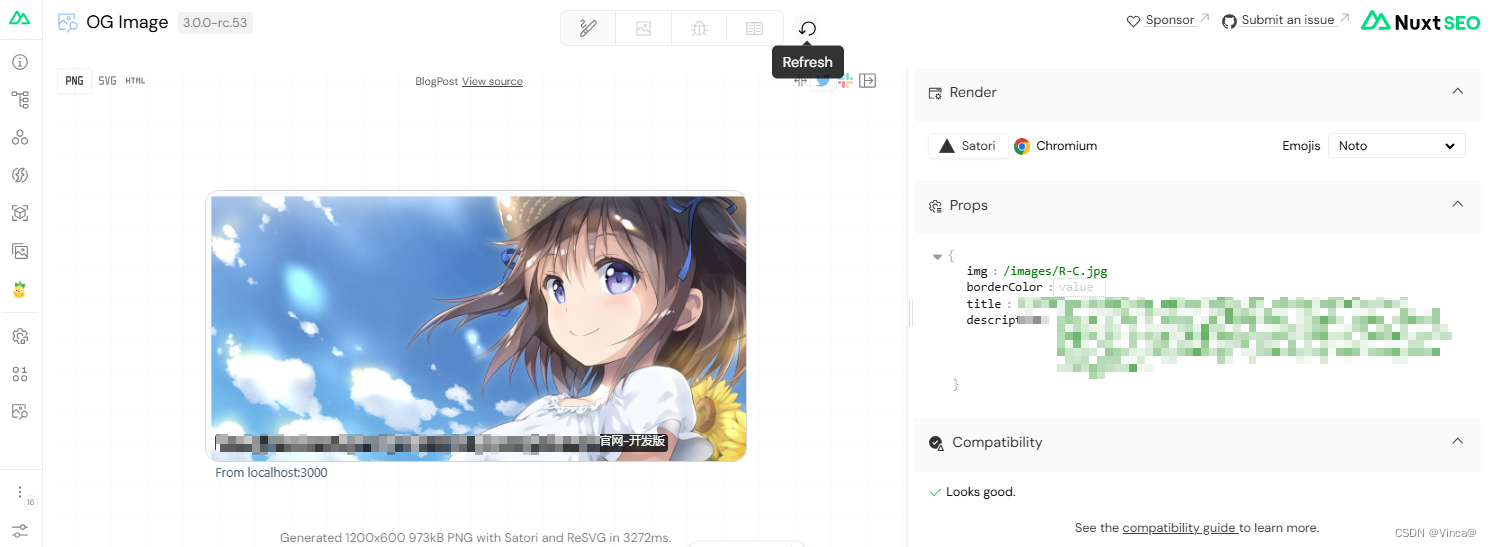编辑:OAK中国
首发:oakchina.cn
喜欢的话,请多多👍⭐️✍
内容可能会不定期更新,官网内容都是最新的,请查看首发地址链接。
Hello,大家好,这里是OAK中国,我是Ashely。
专注科技,专注分享。
这可能是我给大家发的最后一篇博客了,马上就要离开这里,追逐我的梦想了!Anyway,来看教程正文吧!
1.其他Yolo转换及使用教程请参考
2.检测类的yolo模型建议使用在线转换(地址),如果在线转换不成功,你再根据本教程来做本地转换。
▌.pt 转换为 .onnx
使用下列脚本(将脚本放到 YOLOv10 根目录中)将 pytorch 模型转换为 onnx 模型
若安装了blobconverter可直接转换成 blob
示例用法(默认使用 one2one ):
python export_onnx.py -w <path_to_model>.pt -imgsz 640
export_onnx.py :
usage: export_onnx.py [-h] -m INPUT_MODEL [-imgsz IMG_SIZE [IMG_SIZE ...]] [-op OPSET] [--max_det MAX_DET] [-n NAME] [-o OUTPUT_DIR] [-b] [-s] [-sh SHAVES] [-t {docker,blobconverter,local}]
Tool for converting Yolov8 models to the blob format used by OAK
optional arguments:
-h, --help show this help message and exit
-m INPUT_MODEL, -i INPUT_MODEL, -w INPUT_MODEL, --input_model INPUT_MODEL
weights path (default: None)
-imgsz IMG_SIZE [IMG_SIZE ...], --img-size IMG_SIZE [IMG_SIZE ...]
image size (default: [640, 640])
-op OPSET, --opset OPSET
opset version (default: 12)
--max_det MAX_DET maximum number of detections per image (default: 300)
--one2many Use the 'one2many' branch as the 'head' output, otherwise 'one2one' (default: False)
-n NAME, --name NAME The name of the model to be saved, none means using the same name as the input model (default: None)
-o OUTPUT_DIR, --output_dir OUTPUT_DIR
Directory for saving files, none means using the same path as the input model (default: None)
-b, --blob OAK Blob export (default: False)
-s, --spatial_detection
Inference with depth information (default: False)
-sh SHAVES, --shaves SHAVES
Inference with depth information (default: None)
-t {docker,blobconverter,local}, --convert_tool {docker,blobconverter,local}
Which tool is used to convert, docker: should already have docker (https://docs.docker.com/get-docker/) and docker-py (pip install docker) installed; blobconverter: uses an online
server to convert the model and should already have blobconverter (pip install blobconverter); local: use openvino-dev (pip install openvino-dev) and openvino 2022.1 (
https://docs.oakchina.cn/en/latest /pages/Advanced/Neural_networks/local_convert_openvino.html#id2) to convert (default: blobconverter)
#!/usr/bin/env python3
# -*- coding:utf-8 -*-
import argparse
import json
import logging
import math
import sys
import time
import warnings
from io import BytesIO
from pathlib import Path
from zipfile import ZipFile, ZIP_LZMA
import torch
from torch import nn
warnings.filterwarnings("ignore")
FILE = Path(__file__).resolve()
ROOT = FILE.parents[0]
if str(ROOT) not in sys.path:
sys.path.append(str(ROOT)) # add ROOT to PATH
from ultralytics.nn.modules import v10Detect, Detect
from ultralytics.nn.tasks import attempt_load_weights
from ultralytics.utils.tal import dist2bbox, make_anchors
from ultralytics.utils import ops
from ultralytics.utils.torch_utils import select_device
try:
from rich import print
from rich.logging import RichHandler
logging.basicConfig(
level="INFO",
format="%(message)s",
datefmt="[%X]",
handlers=[
RichHandler(
rich_tracebacks=False,
show_path=False,
)
],
)
except ImportError:
logging.basicConfig(
level="INFO",
format="%(asctime)s\t%(levelname)s\t%(message)s",
datefmt="[%X]",
)
def v10postprocess(preds, max_det, nc=80):
"""
对模型预测结果进行后处理。
Args:
preds (torch.Tensor): 模型的预测结果,形状为 (batch_size, num_boxes, 4 + num_classes)。
max_det (int): 需要保留的最大检测框数量。
nc (int): 类别数。
Returns:
boxes (torch.Tensor): 保留的检测框的坐标,形状为 (batch_size, max_det, 4)。
scores (torch.Tensor): 保留的检测框的置信度,形状为 (batch_size, max_det)。
labels (torch.Tensor): 保留的检测框的类别标签,形状为 (batch_size, max_det)。
Notes:
这个函数假设输入的 `preds` 张量的最后一个维度表示每个检测框的坐标和置信度。
"""
assert 4 + nc == preds.shape[-1]
# 分割预测结果为边界框坐标和置信度
boxes, scores = preds.split([4, nc], dim=-1)
# 选取每个预测结果中置信度最高的几个预测框
max_scores = scores.amax(dim=-1)
max_scores, index = torch.topk(max_scores, max_det, dim=-1)
index = index.unsqueeze(-1)
# 根据置信度最高的预测框的索引,获取对应的边界框和置信度
boxes = torch.gather(boxes, dim=1, index=torch.cat([index for i in range(boxes.shape[-1])], dim=-1))
scores = torch.gather(scores, dim=1, index=torch.cat([index for i in range(scores.shape[-1])], dim=-1))
# 在所有预测结果中选取置信度最高的几个预测框
scores, index = torch.topk(scores.flatten(1), max_det, dim=-1)
# 计算类别标签
labels = index - (index // nc) * nc
index = (index // nc).unsqueeze(-1)
# 根据索引获取保留的边界框
boxes = boxes.gather(dim=1, index=torch.cat([index for i in range(boxes.shape[-1])], dim=-1))
return boxes, scores, labels
class DetectV10(nn.Module):
"""YOLOv10 Detect head for detection models"""
dynamic = False # force grid reconstruction
export = False # export mode
shape = None
anchors = torch.empty(0) # init
strides = torch.empty(0) # init
max_det = -1
def __init__(self, old_detect):
super().__init__()
self.nc = old_detect.nc # number of classes
self.nl = old_detect.nl # number of detection layers
self.reg_max = old_detect.reg_max # DFL channels (ch[0] // 16 to scale 4/8/12/16/20 for n/s/m/l/x)
self.no = old_detect.no # number of outputs per anchor
self.stride = old_detect.stride # strides computed during build
self.cv2 = old_detect.cv2
self.cv3 = old_detect.cv3
self.dfl = old_detect.dfl
self.f = old_detect.f
self.i = old_detect.i
self.one2one_cv2 = old_detect.one2one_cv2
self.one2one_cv3 = old_detect.one2one_cv3
def decode_bboxes(self, bboxes, anchors):
"""Decode bounding boxes."""
return dist2bbox(bboxes, anchors, xywh=False, dim=1)
def inference(self, x):
# Inference path
shape = x[0].shape # BCHW
x_cat = torch.cat([xi.view(shape[0], self.no, -1) for xi in x], 2)
if self.dynamic or self.shape != shape:
self.anchors, self.strides = (x.transpose(0, 1) for x in make_anchors(x, self.stride, 0.5))
self.shape = shape
box, cls = x_cat.split((self.reg_max * 4, self.nc), 1)
# dbox = dist2bbox(self.dfl(box), self.anchors.unsqueeze(0), xywh=False, dim=1) * self.strides
dbox = self.decode_bboxes(self.dfl(box), self.anchors.unsqueeze(0)) * self.strides
y = torch.cat((dbox, cls.sigmoid()), 1)
return y
def forward_feat(self, x, cv2, cv3):
y = []
for i in range(self.nl):
y.append(torch.cat((cv2[i](x[i]), cv3[i](x[i])), 1))
return y
def forward(self, x):
one2one = self.forward_feat([xi.detach() for xi in x], self.one2one_cv2, self.one2one_cv3)
one2one = self.inference(one2one)
assert self.max_det != -1
boxes, scores, labels = v10postprocess(one2one.permute(0, 2, 1), self.max_det, self.nc)
boxes /= torch.Tensor([x[0].shape[2] * 2**3, x[0].shape[3] * 2**3, x[0].shape[2] * 2**3, x[0].shape[3] * 2**3])
return torch.cat([labels.unsqueeze(-1), labels.unsqueeze(-1), scores.unsqueeze(-1), boxes], dim=-1)
# return torch.cat([boxes, scores.unsqueeze(-1), labels.unsqueeze(-1)], dim=-1)
def bias_init(self):
# Initialize Detect() biases, WARNING: requires stride availability
m = self # self.model[-1] # Detect() module
for a, b, s in zip(m.one2one_cv2, m.one2one_cv3, m.stride): # from
a[-1].bias.data[:] = 1.0 # box
b[-1].bias.data[: m.nc] = math.log(5 / m.nc / (640 / s) ** 2) # cls (.01 objects, 80 classes, 640 img)
class DetectV8(nn.Module):
"""YOLOv8 Detect head for detection models"""
dynamic = False # force grid reconstruction
export = False # export mode
shape = None
anchors = torch.empty(0) # init
strides = torch.empty(0) # init
def __init__(self, old_detect):
super().__init__()
self.nc = old_detect.nc # number of classes
self.nl = old_detect.nl # number of detection layers
self.reg_max = (
old_detect.reg_max
) # DFL channels (ch[0] // 16 to scale 4/8/12/16/20 for n/s/m/l/x)
self.no = old_detect.no # number of outputs per anchor
self.stride = old_detect.stride # strides computed during build
self.cv2 = old_detect.cv2
self.cv3 = old_detect.cv3
self.dfl = old_detect.dfl
self.f = old_detect.f
self.i = old_detect.i
def forward(self, x):
shape = x[0].shape # BCHW
for i in range(self.nl):
x[i] = torch.cat((self.cv2[i](x[i]), self.cv3[i](x[i])), 1)
box, cls = torch.cat([xi.view(shape[0], self.no, -1) for xi in x], 2).split(
(self.reg_max * 4, self.nc), 1
)
box = self.dfl(box)
cls_output = cls.sigmoid()
# Get the max
conf, _ = cls_output.max(1, keepdim=True)
# Concat
y = torch.cat([box, conf, cls_output], dim=1)
# Split to 3 channels
outputs = []
start, end = 0, 0
for i, xi in enumerate(x):
end += xi.shape[-2] * xi.shape[-1]
outputs.append(
y[:, :, start:end].view(xi.shape[0], -1, xi.shape[-2], xi.shape[-1])
)
start += xi.shape[-2] * xi.shape[-1]
return outputs
def bias_init(self):
# Initialize Detect() biases, WARNING: requires stride availability
m = self # self.model[-1] # Detect() module
for a, b, s in zip(m.cv2, m.cv3, m.stride): # from
a[-1].bias.data[:] = 1.0 # box
b[-1].bias.data[: m.nc] = math.log(
5 / m.nc / (640 / s) ** 2
) # cls (.01 objects, 80 classes, 640 img)
def parse_args():
parser = argparse.ArgumentParser(
description="Tool for converting Yolov8 models to the blob format used by OAK",
formatter_class=argparse.ArgumentDefaultsHelpFormatter,
)
parser.add_argument(
"-m",
"-i",
"-w",
"--input_model",
type=Path,
required=True,
help="weights path",
)
parser.add_argument(
"-imgsz",
"--img-size",
nargs="+",
type=int,
default=[640, 640],
help="image size",
) # height, width
parser.add_argument("-op", "--opset", type=int, default=12, help="opset version")
parser.add_argument("--max_det", default=300, help="maximum number of detections per image")
parser.add_argument(
"--one2many",
action="store_true",
help="Use the 'one2many' branch as the 'head' output, otherwise 'one2one'",
)
parser.add_argument(
"-n",
"--name",
type=str,
help="The name of the model to be saved, none means using the same name as the input model",
)
parser.add_argument(
"-o",
"--output_dir",
type=Path,
help="Directory for saving files, none means using the same path as the input model",
)
parser.add_argument(
"-b",
"--blob",
action="store_true",
help="OAK Blob export",
)
parser.add_argument(
"-s",
"--spatial_detection",
action="store_true",
help="Inference with depth information",
)
parser.add_argument(
"-sh",
"--shaves",
type=int,
help="Inference with depth information",
)
parser.add_argument(
"-t",
"--convert_tool",
type=str,
help="Which tool is used to convert, docker: should already have docker (https://docs.docker.com/get-docker/) and docker-py (pip install docker) installed; blobconverter: uses an online server to convert the model and should already have blobconverter (pip install blobconverter); local: use openvino-dev (pip install openvino-dev) and openvino 2022.1 ( https://docs.oakchina.cn/en/latest /pages/Advanced/Neural_networks/local_convert_openvino.html#id2) to convert",
default="blobconverter",
choices=["docker", "blobconverter", "local"],
)
args = parser.parse_args()
args.input_model = args.input_model.resolve().absolute()
if args.name is None:
args.name = args.input_model.stem
if args.output_dir is None:
args.output_dir = args.input_model.parent
args.img_size *= 2 if len(args.img_size) == 1 else 1 # expand
if args.shaves is None:
args.shaves = 5 if args.spatial_detection else 6
return args
def export(input_model, img_size, output_model, opset, **kwargs):
t = time.time()
# Load PyTorch model
device = select_device("cpu")
# load FP32 model
model = attempt_load_weights(input_model, device=device, inplace=True, fuse=True)
labels = model.module.names if hasattr(model, "module") else model.names # get class names
labels = labels if isinstance(labels, list) else list(labels.values())
nc = model.nc if hasattr(model, "nc") else model.model[-1].nc
# check num classes and labels
assert nc == len(labels), f"Model class count {nc} != len(names) {len(labels)}"
# Replace with the custom Detection Head
if kwargs.get("one2many", False):
if isinstance(model.model[-1], (Detect)):
model.model[-1] = DetectV8(model.model[-1])
model.model[-1].export = True
else:
if isinstance(model.model[-1], (v10Detect)):
print("Replacing model.model[-1] with DetectV10")
model.model[-1] = DetectV10(model.model[-1])
model.model[-1].export = True
model.model[-1].max_det = kwargs.get("max_det", 300)
num_branches = model.model[-1].nl
# Input
img = torch.zeros(1, 3, *img_size).to(device) # image size(1,3,320,320) iDetection
model.eval()
model.float()
model = model.fuse()
model(img) # dry runs
# ONNX export
try:
import onnx
print()
logging.info("Starting ONNX export with onnx %s..." % onnx.__version__)
output_list = ["output%s_yolov6r2" % (i + 1) for i in range(num_branches)] if kwargs.get("one2many", False) else ["output_yolov10"]
with BytesIO() as f:
torch.onnx.export(
model,
img,
f,
verbose=False,
opset_version=opset,
input_names=["images"],
output_names=output_list,
)
# Checks
onnx_model = onnx.load_from_string(f.getvalue()) # load onnx model
onnx.checker.check_model(onnx_model) # check onnx model
try:
import onnxsim
logging.info("Starting to simplify ONNX...")
onnx_model, check = onnxsim.simplify(onnx_model)
assert check, "assert check failed"
except ImportError:
logging.warning(
"onnxsim is not found, if you want to simplify the onnx, "
+ "you should install it:\n\t"
+ "pip install -U onnxsim onnxruntime\n"
+ "then use:\n\t"
+ f'python -m onnxsim "{output_model}" "{output_model}"'
)
except Exception:
logging.exception("Simplifier failure")
onnx.save(onnx_model, output_model)
logging.info("ONNX export success, saved as:\n\t%s" % output_model)
except Exception:
logging.exception("ONNX export failure")
if kwargs.get("one2many", False):
# generate anchors and sides
anchors = []
# generate masks
masks = dict()
logging.info("anchors:\n\t%s" % anchors)
logging.info("anchor_masks:\n\t%s" % masks)
jsondata = {
"nn_config": {
"output_format": "detection",
"NN_family": "YOLO",
"input_size": f"{img_size[0]}x{img_size[1]}",
"NN_specific_metadata": {
"classes": nc,
"coordinates": 4,
"anchors": anchors,
"anchor_masks": masks,
"iou_threshold": 0.3,
"confidence_threshold": 0.5,
},
},
"mappings": {"labels": labels},
}
else:
jsondata = {
"nn_config": {
"output_format": "detection",
"NN_family": "mobilenet",
"input_size": f"{img_size[0]}x{img_size[1]}",
"confidence_threshold": 0.5,
},
"mappings": {"labels": labels},
}
export_json = output_model.with_suffix(".json")
export_json.write_text(
json.dumps(
jsondata,
indent=4,
)
)
logging.info("Model data export success, saved as:\n\t%s" % export_json)
# Finish
logging.info("Export complete (%.2fs).\n" % (time.time() - t))
def convert(convert_tool, output_model, shaves, output_dir, name, **kwargs):
t = time.time()
export_dir: Path = output_dir.joinpath(name + "_openvino")
export_dir.mkdir(parents=True, exist_ok=True)
export_xml = export_dir.joinpath(name + ".xml")
export_blob = export_dir.joinpath(name + ".blob")
if convert_tool == "blobconverter":
import blobconverter
blob_path = blobconverter.from_onnx(
model=str(output_model),
data_type="FP16",
shaves=shaves,
use_cache=False,
# version="2021.4",
version="2022.1",
output_dir=export_dir,
optimizer_params=[
"--scale=255",
"--reverse_input_channel",
"--use_new_frontend",
],
download_ir=True,
)
with ZipFile(blob_path, "r", ZIP_LZMA) as zip_obj:
for name in zip_obj.namelist():
zip_obj.extract(
name,
export_dir,
)
blob_path.unlink()
elif convert_tool == "docker":
import docker
export_dir = Path("/io").joinpath(export_dir.name)
export_xml = export_dir.joinpath(name + ".xml")
export_blob = export_dir.joinpath(name + ".blob")
client = docker.from_env()
image = client.images.pull("openvino/ubuntu20_dev", tag="2022.3.1")
docker_output = client.containers.run(
image=image.tags[0],
command=f"bash -c \"mo -m {name}.onnx -n {name} -o {export_dir} --static_shape --reverse_input_channels --scale=255 --use_new_frontend && echo 'MYRIAD_ENABLE_MX_BOOT NO' | tee /tmp/myriad.conf >> /dev/null && /opt/intel/openvino/tools/compile_tool/compile_tool -m {export_xml} -o {export_blob} -ip U8 -VPU_NUMBER_OF_SHAVES {shaves} -VPU_NUMBER_OF_CMX_SLICES {shaves} -d MYRIAD -c /tmp/myriad.conf\"",
remove=True,
volumes=[
f"{output_dir}:/io",
],
working_dir="/io",
)
logging.info(docker_output.decode("utf8"))
else:
import subprocess as sp
# OpenVINO export
logging.info("Starting to export OpenVINO...")
OpenVINO_cmd = "mo --input_model %s --output_dir %s --data_type FP16 --scale 255 --reverse_input_channel" % (
output_model,
export_dir,
)
try:
sp.check_output(OpenVINO_cmd, shell=True)
logging.info("OpenVINO export success, saved as %s" % export_dir)
except sp.CalledProcessError:
logging.exception("")
logging.warning("OpenVINO export failure!")
logging.warning("By the way, you can try to export OpenVINO use:\n\t%s" % OpenVINO_cmd)
# OAK Blob export
logging.info("Then you can try to export blob use:")
blob_cmd = (
"echo 'MYRIAD_ENABLE_MX_BOOT ON' | tee /tmp/myriad.conf"
+ "compile_tool -m %s -o %s -ip U8 -d MYRIAD -VPU_NUMBER_OF_SHAVES %s -VPU_NUMBER_OF_CMX_SLICES %s -c /tmp/myriad.conf"
% (export_xml, export_blob, shaves, shaves)
)
logging.info("%s" % blob_cmd)
logging.info(
"compile_tool maybe in the path: /opt/intel/openvino/tools/compile_tool/compile_tool, if you install openvino 2022.1 with apt"
)
logging.info("Convert complete (%.2fs).\n" % (time.time() - t))
if __name__ == "__main__":
args = parse_args()
logging.info(args)
print()
output_model = args.output_dir / (args.name + ".onnx")
export(output_model=output_model, **vars(args))
if args.blob:
convert(output_model=output_model, **vars(args))
可以使用 Netron 查看模型结构:
one2one:
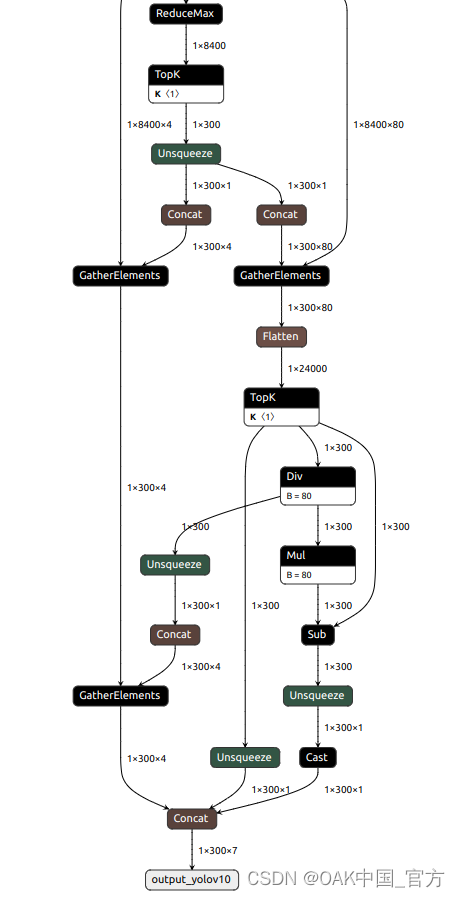
one2many:
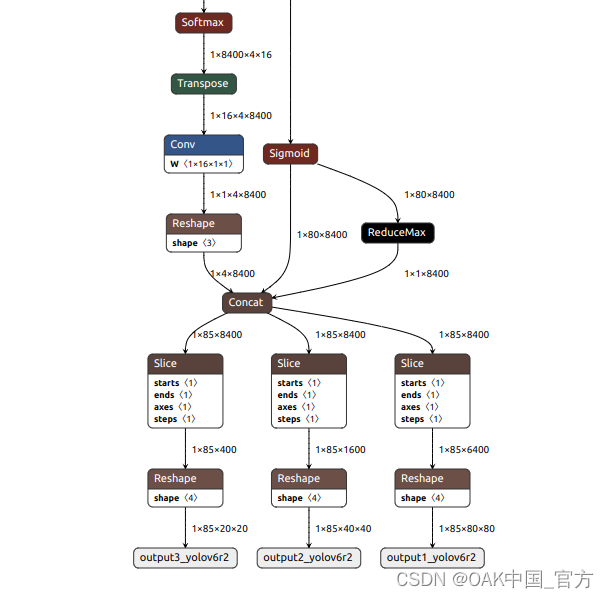
▌转换
openvino 本地转换
onnx -> openvino
mo 是 openvino_dev 2022.1 中脚本,安装命令为
pip install openvino-dev
mo --input_model yolov10n.onnx --scale=255 --reverse_input_channel
openvino -> blob
compile_tool 是 OpenVINO Runtime 中脚本
<path>/compile_tool -m yolov10n.xml
-ip U8 -d MYRIAD
-VPU_NUMBER_OF_SHAVES 6
-VPU_NUMBER_OF_CMX_SLICES 6
在线转换
blobconvert 网页:http://blobconverter.luxonis.com/
- 进入网页,按下图指示操作:
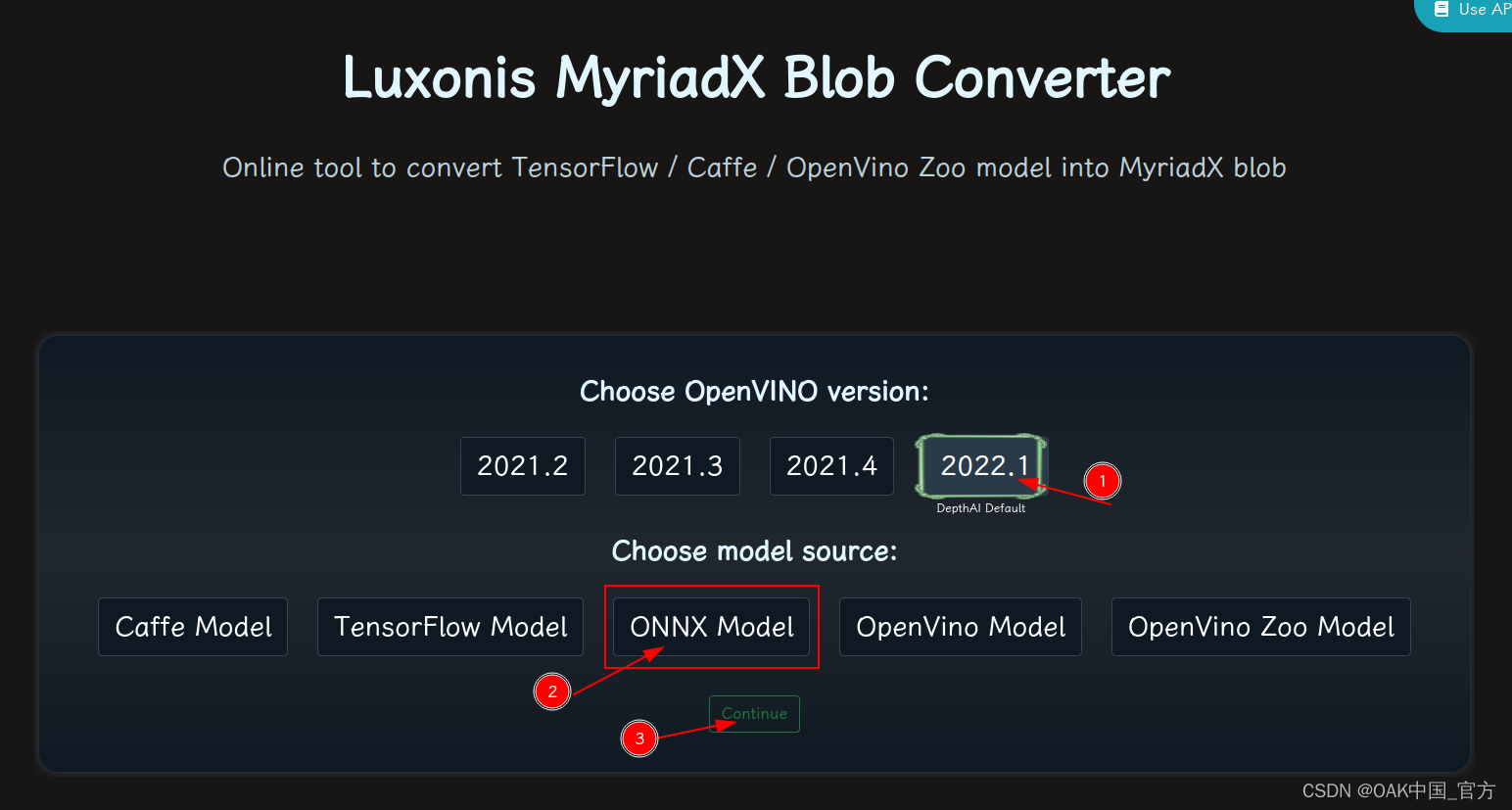
- 修改参数,转换模型:
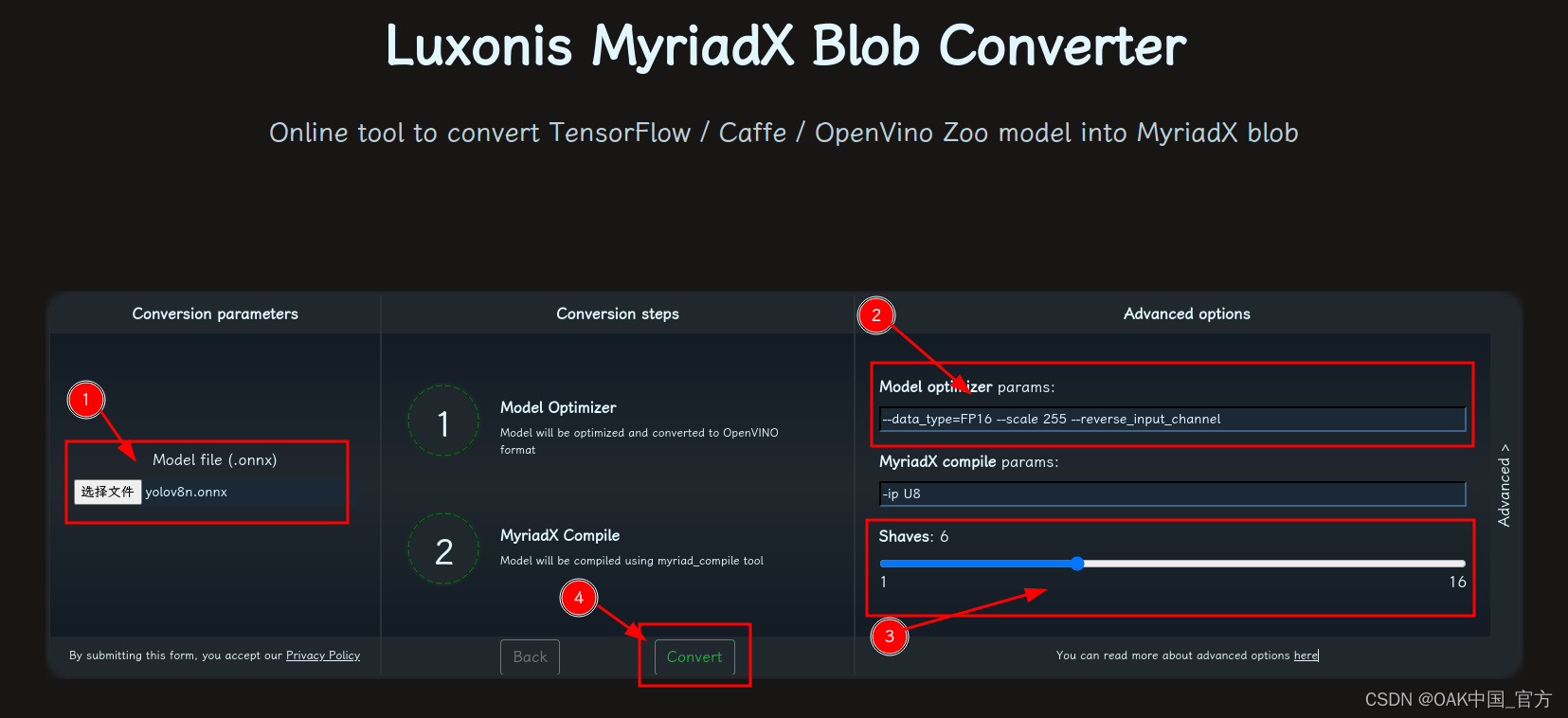
- 选择 onnx 模型
- 修改 optimizer_params 为 --data_type=FP16 --scale=255 --reverse_input_channel
- 修改 shaves 为 6
- 转换
blobconverter python 代码
blobconverter.from_onnx(
"yolov10n.onnx",
optimizer_params=[
"--scale=255",
"--reverse_input_channel",
],
shaves=6,
)
blobconvert cli
blobconverter --onnx yolov10n.onnx -sh 6 -o . --optimizer-params "scale=255 --reverse_input_channel"
▌DepthAI 示例
one2one
正确解码需要可配置的网络相关参数:
- setConfidenceThreshold – 置信度阈值,低于该阈值的对象将被过滤掉
# coding=utf-8
import cv2
import depthai as dai
import numpy as np
numClasses = 80
model = dai.OpenVINO.Blob("yolov10n.blob")
dim = next(iter(model.networkInputs.values())).dims
W, H = dim[:2]
labelMap = [
# "class_1","class_2","..."
"class_%s" % i
for i in range(numClasses)
]
# Create pipeline
pipeline = dai.Pipeline()
# Define sources and outputs
camRgb = pipeline.create(dai.node.ColorCamera)
detectionNetwork = pipeline.create(dai.node.MobileNetDetectionNetwork)
xoutRgb = pipeline.create(dai.node.XLinkOut)
xoutNN = pipeline.create(dai.node.XLinkOut)
xoutRgb.setStreamName("image")
xoutNN.setStreamName("nn")
# Properties
camRgb.setPreviewSize(W, H)
camRgb.setResolution(dai.ColorCameraProperties.SensorResolution.THE_1080_P)
camRgb.setInterleaved(False)
camRgb.setColorOrder(dai.ColorCameraProperties.ColorOrder.BGR)
# Network specific settings
detectionNetwork.setBlob(model)
detectionNetwork.setConfidenceThreshold(0.5)
# Linking
camRgb.preview.link(detectionNetwork.input)
camRgb.preview.link(xoutRgb.input)
detectionNetwork.out.link(xoutNN.input)
# Connect to device and start pipeline
with dai.Device(pipeline) as device:
# Output queues will be used to get the rgb frames and nn data from the outputs defined above
imageQueue = device.getOutputQueue(name="image", maxSize=4, blocking=False)
detectQueue = device.getOutputQueue(name="nn", maxSize=4, blocking=False)
frame = None
detections = []
# nn data, being the bounding box locations, are in <0..1> range - they need to be normalized with frame width/height
def frameNorm(frame, bbox):
normVals = np.full(len(bbox), frame.shape[0])
normVals[::2] = frame.shape[1]
return (np.clip(np.array(bbox), 0, 1) * normVals).astype(int)
def drawText(frame, text, org, color=(255, 255, 255), thickness=1):
cv2.putText(
frame, text, org, cv2.FONT_HERSHEY_SIMPLEX, 0.5, (0, 0, 0), thickness + 3, cv2.LINE_AA
)
cv2.putText(
frame, text, org, cv2.FONT_HERSHEY_SIMPLEX, 0.5, color, thickness, cv2.LINE_AA
)
def drawRect(frame, topLeft, bottomRight, color=(255, 255, 255), thickness=1):
cv2.rectangle(frame, topLeft, bottomRight, (0, 0, 0), thickness + 3)
cv2.rectangle(frame, topLeft, bottomRight, color, thickness)
def displayFrame(name, frame):
color = (128, 128, 128)
for detection in detections:
bbox = frameNorm(
frame, (detection.xmin, detection.ymin, detection.xmax, detection.ymax)
)
drawText(
frame=frame,
text=labelMap[detection.label],
org=(bbox[0] + 10, bbox[1] + 20),
)
drawText(
frame=frame,
text=f"{detection.confidence:.2%}",
org=(bbox[0] + 10, bbox[1] + 35),
)
drawRect(
frame=frame,
topLeft=(bbox[0], bbox[1]),
bottomRight=(bbox[2], bbox[3]),
color=color,
)
# Show the frame
cv2.imshow(name, frame)
while True:
imageQueueData = imageQueue.tryGet()
detectQueueData = detectQueue.tryGet()
if imageQueueData is not None:
frame = imageQueueData.getCvFrame()
if detectQueueData is not None:
detections = detectQueueData.detections
if frame is not None:
displayFrame("rgb", frame)
if cv2.waitKey(1) == ord("q"):
break
one2many
正确解码需要可配置的网络相关参数:
- setNumClasses – YOLO 检测类别的数量
- setIouThreshold – iou 阈值
- setConfidenceThreshold – 置信度阈值,低于该阈值的对象将被过滤掉
- 对象将被过滤掉
# coding=utf-8
import cv2
import depthai as dai
import numpy as np
numClasses = 80
model = dai.OpenVINO.Blob("yolov10n.blob")
dim = next(iter(model.networkInputs.values())).dims
W, H = dim[:2]
output_name, output_tenser = next(iter(model.networkOutputs.items()))
if "yolov6" in output_name:
numClasses = output_tenser.dims[2] - 5
else:
numClasses = output_tenser.dims[2] // 3 - 5
labelMap = [
# "class_1","class_2","..."
"class_%s" % i
for i in range(numClasses)
]
# Create pipeline
pipeline = dai.Pipeline()
# Define sources and outputs
camRgb = pipeline.create(dai.node.ColorCamera)
detectionNetwork = pipeline.create(dai.node.YoloDetectionNetwork)
xoutRgb = pipeline.create(dai.node.XLinkOut)
xoutNN = pipeline.create(dai.node.XLinkOut)
xoutRgb.setStreamName("image")
xoutNN.setStreamName("nn")
# Properties
camRgb.setPreviewSize(W, H)
camRgb.setResolution(dai.ColorCameraProperties.SensorResolution.THE_1080_P)
camRgb.setInterleaved(False)
camRgb.setColorOrder(dai.ColorCameraProperties.ColorOrder.BGR)
# Network specific settings
detectionNetwork.setBlob(model)
detectionNetwork.setConfidenceThreshold(0.5)
# Yolo specific parameters
detectionNetwork.setNumClasses(numClasses)
detectionNetwork.setCoordinateSize(4)
detectionNetwork.setAnchors([])
detectionNetwork.setAnchorMasks({})
detectionNetwork.setIouThreshold(0.5)
# Linking
camRgb.preview.link(detectionNetwork.input)
camRgb.preview.link(xoutRgb.input)
detectionNetwork.out.link(xoutNN.input)
# Connect to device and start pipeline
with dai.Device(pipeline) as device:
# Output queues will be used to get the rgb frames and nn data from the outputs defined above
imageQueue = device.getOutputQueue(name="image", maxSize=4, blocking=False)
detectQueue = device.getOutputQueue(name="nn", maxSize=4, blocking=False)
frame = None
detections = []
# nn data, being the bounding box locations, are in <0..1> range - they need to be normalized with frame width/height
def frameNorm(frame, bbox):
normVals = np.full(len(bbox), frame.shape[0])
normVals[::2] = frame.shape[1]
return (np.clip(np.array(bbox), 0, 1) * normVals).astype(int)
def drawText(frame, text, org, color=(255, 255, 255), thickness=1):
cv2.putText(
frame, text, org, cv2.FONT_HERSHEY_SIMPLEX, 0.5, (0, 0, 0), thickness + 3, cv2.LINE_AA
)
cv2.putText(
frame, text, org, cv2.FONT_HERSHEY_SIMPLEX, 0.5, color, thickness, cv2.LINE_AA
)
def drawRect(frame, topLeft, bottomRight, color=(255, 255, 255), thickness=1):
cv2.rectangle(frame, topLeft, bottomRight, (0, 0, 0), thickness + 3)
cv2.rectangle(frame, topLeft, bottomRight, color, thickness)
def displayFrame(name, frame):
color = (128, 128, 128)
for detection in detections:
bbox = frameNorm(
frame, (detection.xmin, detection.ymin, detection.xmax, detection.ymax)
)
drawText(
frame=frame,
text=labelMap[detection.label],
org=(bbox[0] + 10, bbox[1] + 20),
)
drawText(
frame=frame,
text=f"{detection.confidence:.2%}",
org=(bbox[0] + 10, bbox[1] + 35),
)
drawRect(
frame=frame,
topLeft=(bbox[0], bbox[1]),
bottomRight=(bbox[2], bbox[3]),
color=color,
)
# Show the frame
cv2.imshow(name, frame)
while True:
imageQueueData = imageQueue.tryGet()
detectQueueData = detectQueue.tryGet()
if imageQueueData is not None:
frame = imageQueueData.getCvFrame()
if detectQueueData is not None:
detections = detectQueueData.detections
if frame is not None:
displayFrame("rgb", frame)
if cv2.waitKey(1) == ord("q"):
break
▌参考资料
https://docs.oakchina.cn/en/latest/
https://www.oakchina.cn/selection-guide/
OAK中国
| OpenCV AI Kit在中国区的官方代理商和技术服务商
| 追踪AI技术和产品新动态
戳「+关注」获取最新资讯↗↗
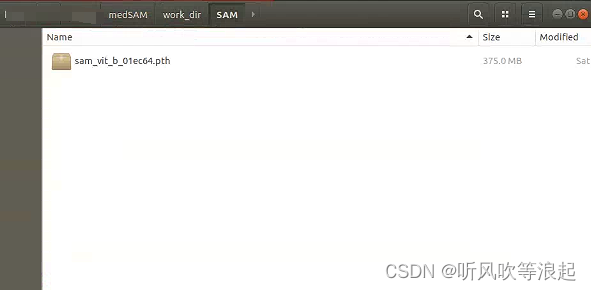
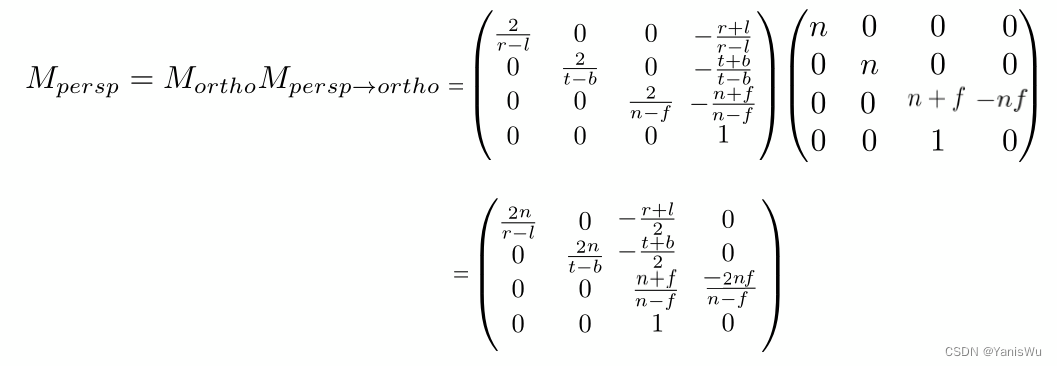

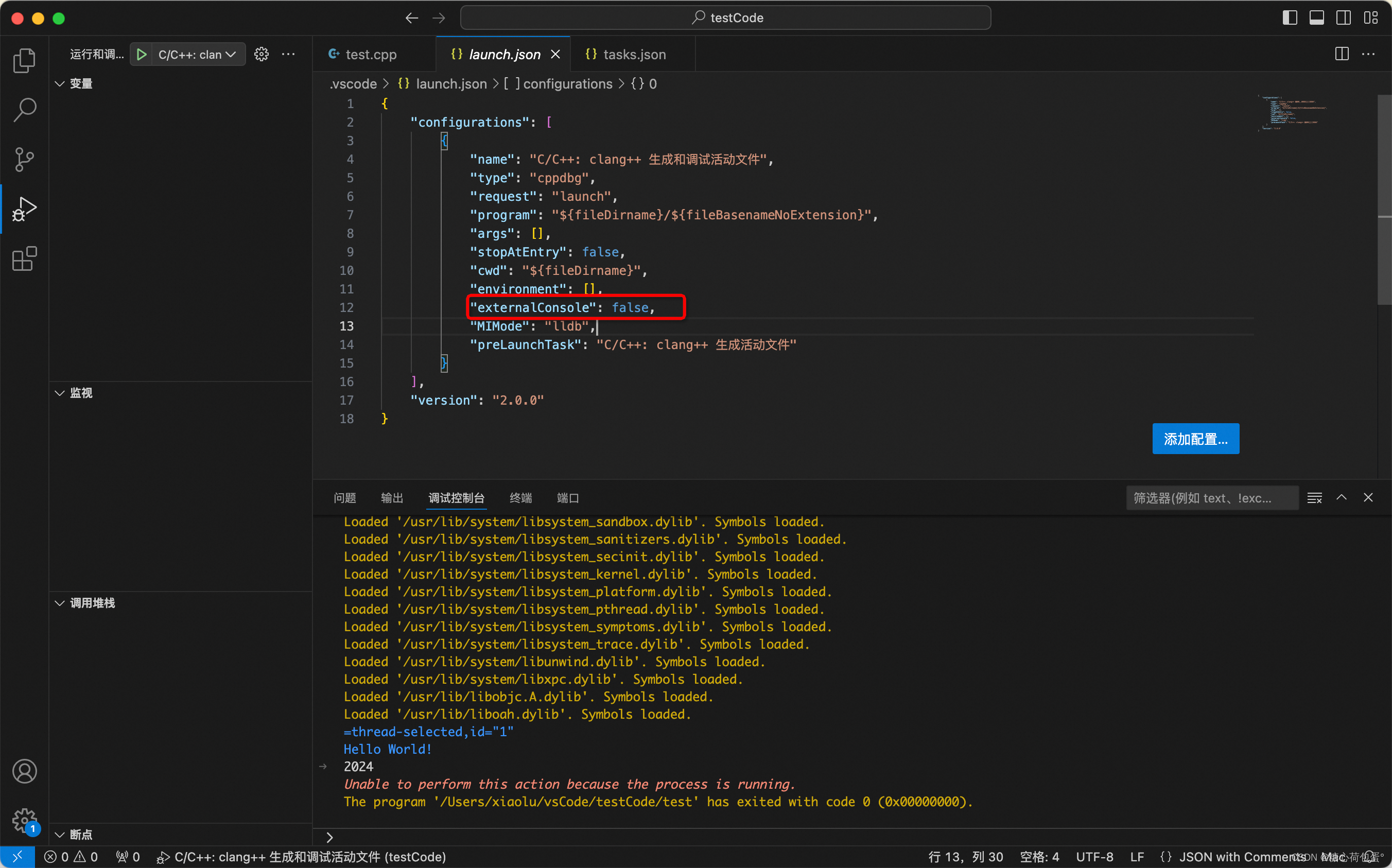




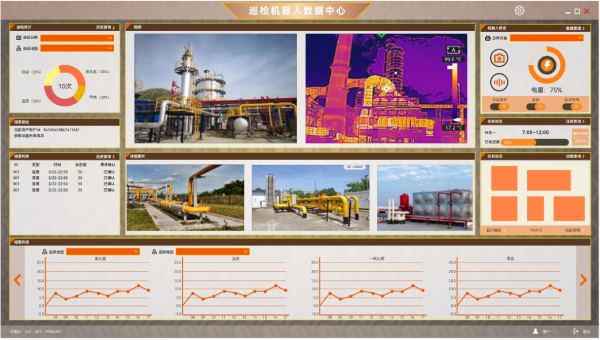
![[个人笔记] 记录docker-compose使用和Harbor的部署过程](https://img-blog.csdnimg.cn/direct/f8b07c97b75343ff834ed52dff6ae5f5.png)

